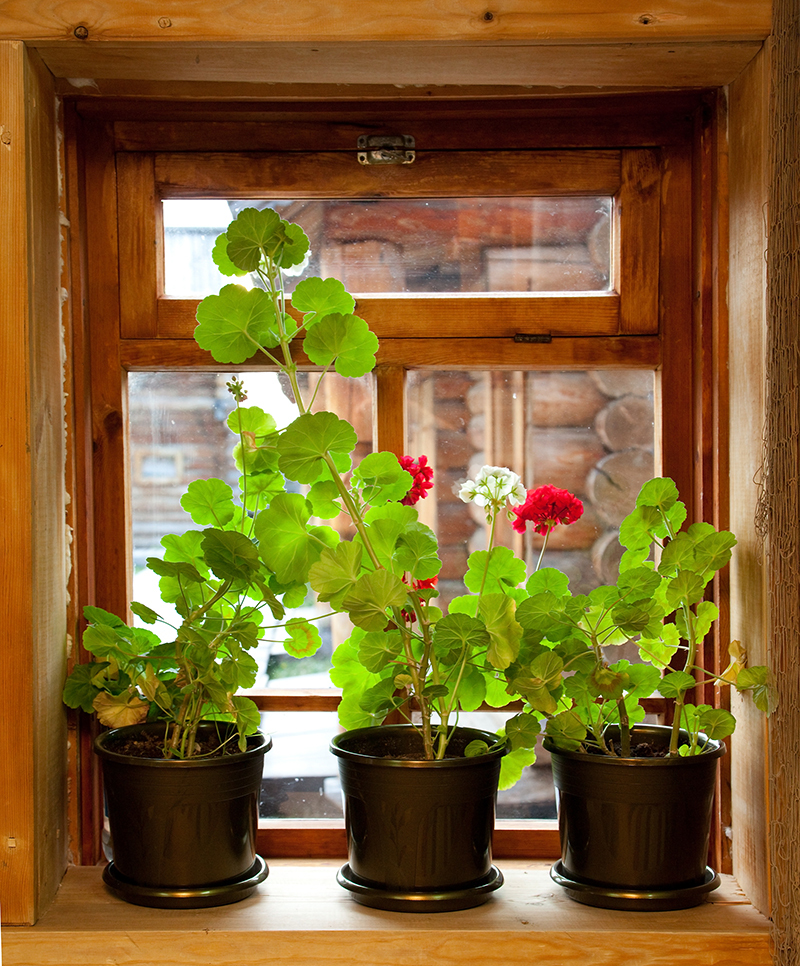Your Comprehensive Guide to Orchid Care
Posted on 18/08/2025
Your Comprehensive Guide to Orchid Care
Orchids are among the most fascinating and stunning plants you can add to your home or garden. Known for their exquisite blooms and remarkable diversity, these plants intrigue both novice gardeners and expert horticulturists alike. However, many people believe that orchid care is challenging and only for experienced plant enthusiasts. The truth is, with a little knowledge and practice, you can grow, nurture, and enjoy beautiful orchids in your own space.
Understanding Orchids: Beauty in Diversity
Orchids belong to one of the largest plant families, Orchidaceae, with over 25,000 species and more than 100,000 hybrids. From the elegant Phalaenopsis (moth orchid) to the rare Blue Vanda, there is an orchid to suit every taste and experience level.
- Phalaenopsis (Moth Orchids): Easy to care for and perfect for beginners.
- Cattleya: Known for their fragrant and colorful blooms.
- Dendrobium: Offers a wide range of flowers in different shapes and hues.
- Oncidium (Dancing Lady): Graceful and vibrant, great for experienced growers.
- Vanda: Dramatic, showy, and needs bright light.
Understanding the unique features of each orchid type is crucial when it comes to orchid maintenance. This knowledge will help you tailor your care routine and ensure healthy, thriving plants.

Optimal Environment for Orchids
Light Requirements
Light is a critical factor in successful orchid cultivation. Most orchids require bright, indirect sunlight. Here's how to provide the right amount of light:
- Phalaenopsis: Prefers filtered light; an east or west-facing window is ideal.
- Cattleya and Vanda: Need more sunlight but not harsh, direct sun that can scorch leaves.
- Dendrobium and Oncidium: Thrive in bright, dappled light.
Pro tip: If your orchid's leaves are dark green, it may not be getting enough light. Yellowish-green leaves often indicate sufficient exposure.
Temperature and Humidity
Orchids love stable, warm temperatures. Daytime temperatures between 65-80?F (18-27?C) and nighttime temperatures slightly cooler (about 55-65?F or 13-18?C) work best.
- Avoid placing your orchids near cold drafts or heating vents.
- Maintain a consistent humidity level around 40-70%.
- Use a humidity tray or room humidifier for drier climates.
Air Circulation
Healthy air movement prevents disease and supports robust orchid growth. Place a small fan near your plants, but avoid direct air blowing on the orchid. This will help reduce stagnant air and excess moisture around the leaves.
Potting Medium and Repotting Orchids
Choosing the Right Potting Mix
Orchids are epiphytes; in their natural environment, they grow on trees and rocks. Standard potting soil is too dense and holds excess moisture. Instead, use special orchid potting mixes available at garden centers. These often include:
- Bark chips
- Sphagnum moss
- Coconut husk
- Perlite or charcoal
A good potting medium allows water to drain quickly and roots to breathe, which is essential for healthy orchid care.
When and How to Repot Orchids
Orchids should be repotted every 1-2 years, or when the medium starts to break down. Signs that your orchid needs repotting include:
- Roots growing out and over the pot
- Mushy or rotten medium
- Stunted growth or fewer blooms
Repotting Steps:
- Gently remove the orchid from its pot.
- Trim away dead or mushy roots with sterilized scissors.
- Place the orchid in fresh medium and a clean pot slightly larger than before.
- Water thoroughly but allow excess moisture to drain.
Watering Orchids: Finding the Right Balance
How Often Should You Water Orchids?
Watering is perhaps the most misunderstood aspect of orchid care. Too much water can lead to root rot, while too little can cause dehydration.
- Phalaenopsis and Dendrobium: Water once a week during winter and twice a week during summer.
- Cattleya and Oncidium: Allow the medium to dry slightly between watering.
- Always water in the morning to let the plant dry by nightfall.
Insert your finger about an inch into the potting medium. If it feels dry, it's time to water your orchid.
Water Quality for Healthy Orchids
Orchids are sensitive to salts and chemicals found in tap water. For the best results:
- Use rainwater, distilled water, or filtered water if possible.
- If using tap water, allow it to sit overnight to dissipate chlorine.
Best Watering Techniques
Avoid watering the foliage. Instead, focus on saturating the potting medium, allowing water to drain completely. Some gardeners use the "soak and drain" method:
- Place the pot in a sink, water thoroughly, and let it drain for several minutes.
- Do not let the pot sit in standing water.
Orchid Fertilization: Feeding Your Blooms
When and What to Fertilize With
Orchids benefit from regular feeding during the active growing period, typically spring through fall. Use a balanced, water-soluble orchid fertilizer (20-20-20) or one specifically formulated for orchids.
- Fertilize every two weeks during active growth, less frequently in winter.
- Follow the "weakly, weekly" rule: Use a diluted fertilizer at one-quarter to half the recommended strength.
- Always water your orchid before applying fertilizer to prevent root burn.
Essential Micronutrients for Orchids
- Nitrogen for leaf and stem growth
- Phosphorus for blooms and strong roots
- Potassium for overall health
- Calcium and magnesium for vibrant color and stress resistance
Encouraging Orchid Blooms
How to Get Orchids to Flower Again
Orchids naturally enter a resting phase after blooming. To encourage re-blooming:
- Provide a slight temperature drop at night during late summer and early autumn.
- Maintain consistent watering and humidity.
- Continue to fertilize, but reduce strength.
- For Phalaenopsis, trim the flower spike above a node after primary bloom; a side spike may develop.
Patience is essential; orchids may take several months to bloom again, but the results are worth the wait!
Common Orchid Pests & Diseases (and Solutions)
Identifying Common Issues
- Mealybugs and scale: Appear as white, cottony patches on leaves and stems.
- Aphids: Small green or black insects that cluster around flower buds.
- Spider mites: Very small, causing yellow stippling and webbing.
- Root rot: Mushy, dark roots caused by overwatering.
Treating and Preventing Problems
- Use insecticidal soap or neem oil for pests. Isolate affected plants if possible.
- Remove infected leaves and flowers promptly.
- Ensure proper watering and air circulation to prevent fungal and bacterial problems.
- Check leaves and roots regularly for signs of stress, pests, or disease.
Frequently Asked Questions About Orchid Care
Can orchids grow indoors year-round?
Yes! Orchids are excellent indoor plants. Place them near bright windows, avoid drafts, and maintain proper humidity.
Do orchids need pruning?
Prune dead or yellowing leaves as needed. After flowering, remove spent flower spikes to direct energy to new growth.
How can I tell if I am overwatering my orchid?
Signs of overwatering: Yellow leaves, limp or mushy roots, and a strong smell from the potting medium. Adjust your routine and improve drainage.
Are orchids toxic to pets?
Most orchids are considered non-toxic to cats and dogs, though it's wise to prevent pets from chewing on plants.

Top Orchid Care Tips for Beginners
- Choose robust, easy-to-grow types like Phalaenopsis for your first orchid.
- Do not use regular potting soil--select a specialized orchid mix.
- Water sparingly--when in doubt, wait another day.
- Feed orchids with diluted fertilizer during active growth.
- Repot orchids every 1-2 years for vigorous health.
- Keep plants clean by gently wiping leaves with a damp cloth.
- Observe plants regularly to catch any issues early.
Conclusion: Mastering the Art of Orchid Care
Orchids can thrive in your home or garden with a little attention to their unique needs. By understanding orchid care basics--from optimal lighting and hydration to proper repotting and pest control--you'll be well on your way to cultivating healthy, blooming plants year after year. Remember: patience, observation, and gentle attention are the keys to success.
Whether you are a seasoned grower or a beginner taking your first steps in the rewarding world of orchid cultivation, following this comprehensive guide will help you nurture these extraordinary plants with confidence. Enjoy the journey, and soon, you'll be rewarded with a dazzling display of blooms that transform your living space.
Happy Growing!
Latest Posts
Your Comprehensive Guide to Orchid Care
Why Red Roses Remain a Valentine's Day Favorite
Peony Flower Colors Unveiled: Secrets and Symbolism





